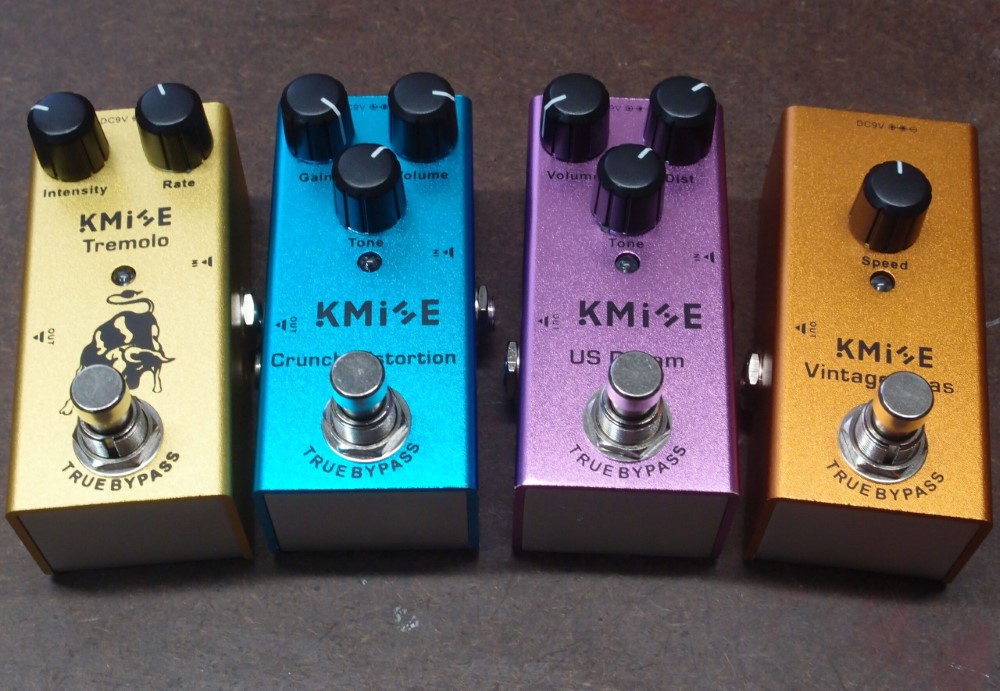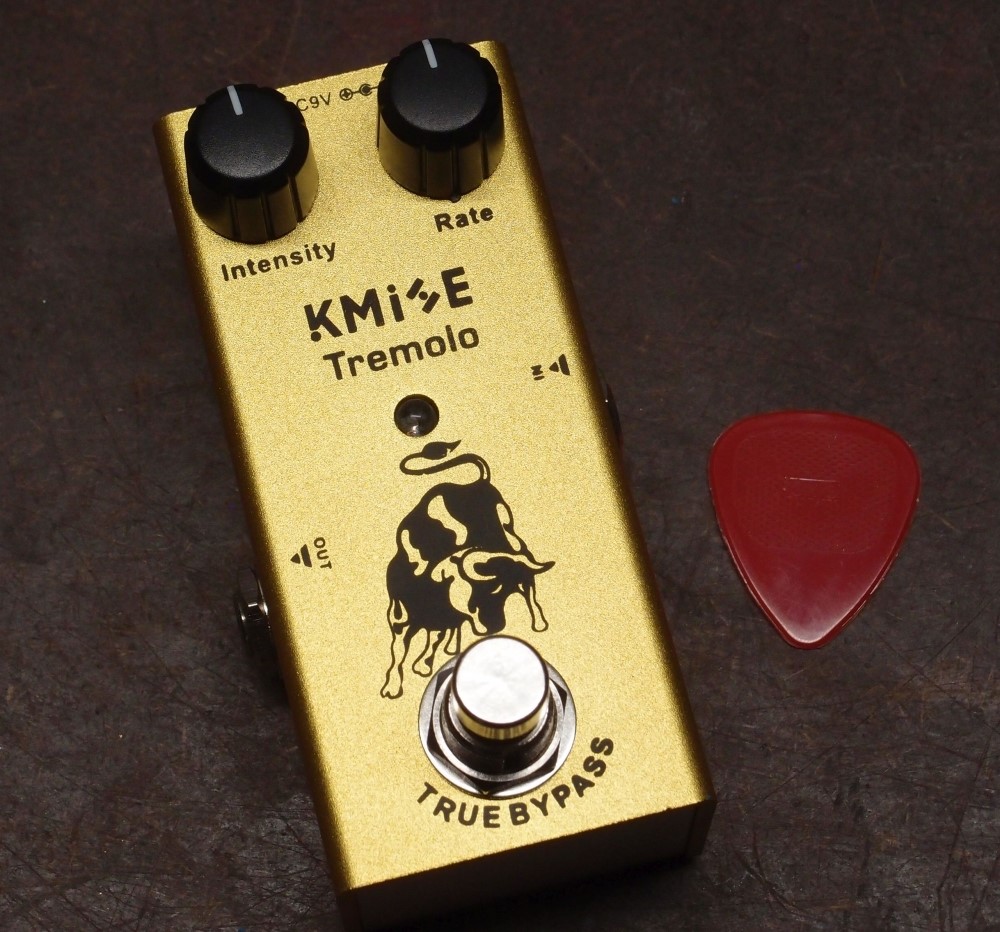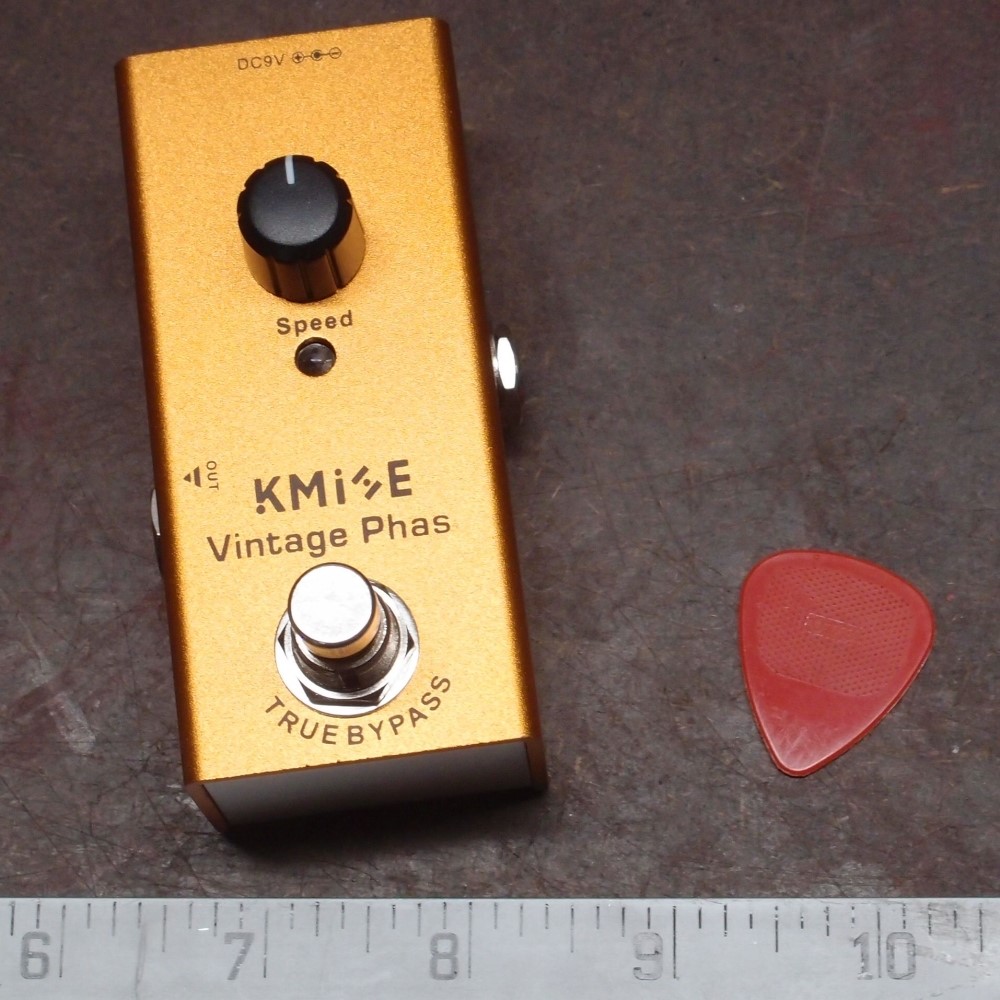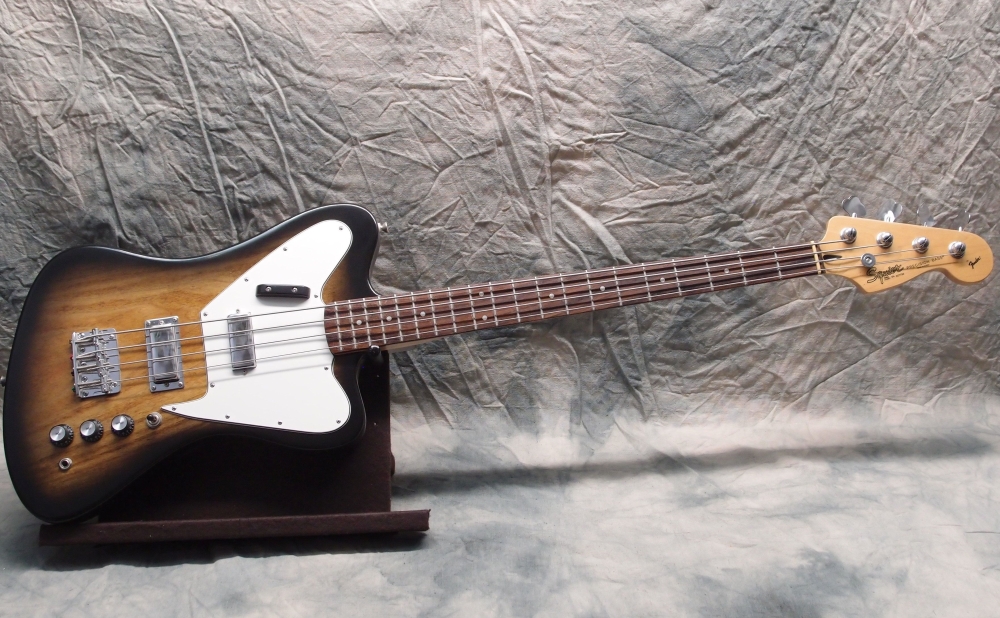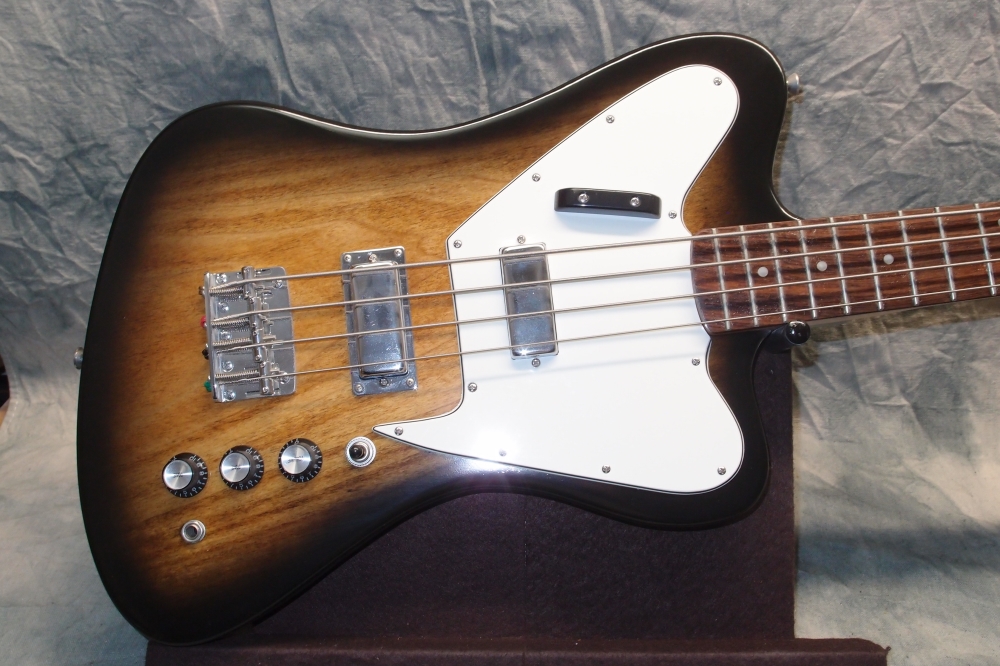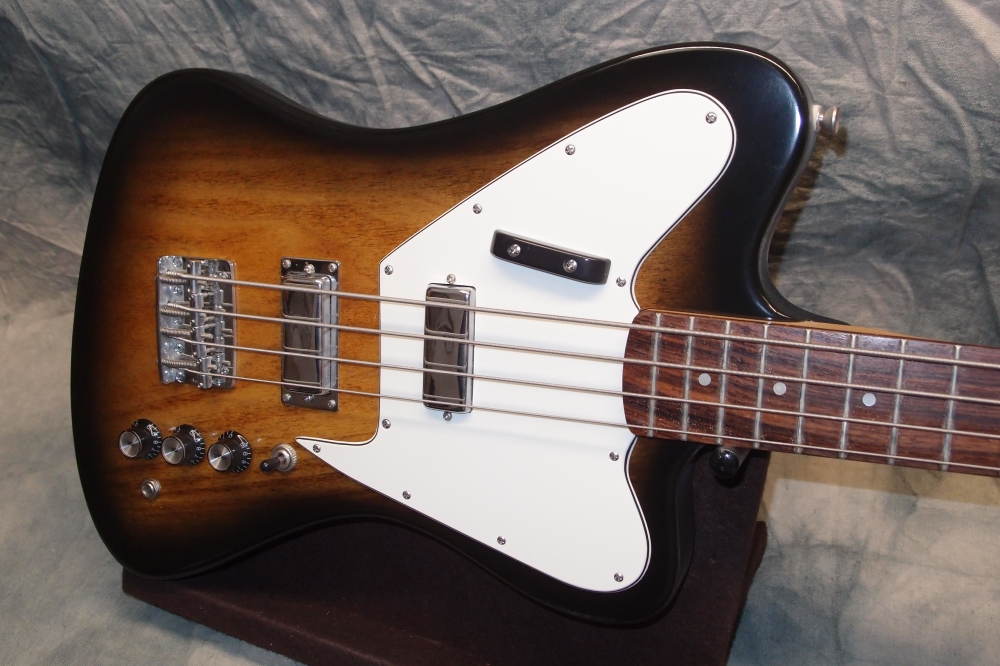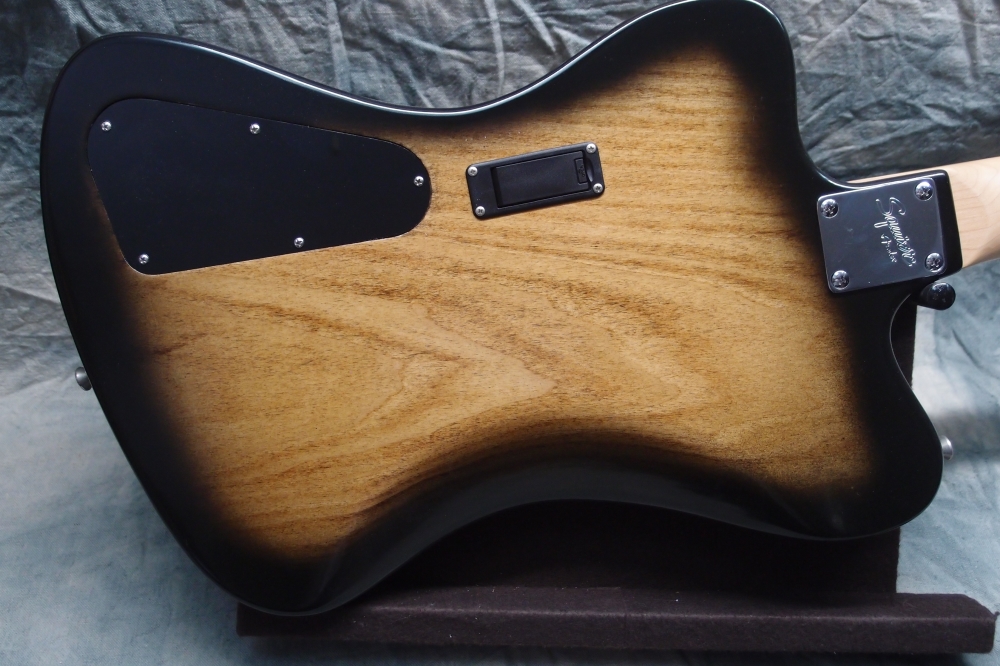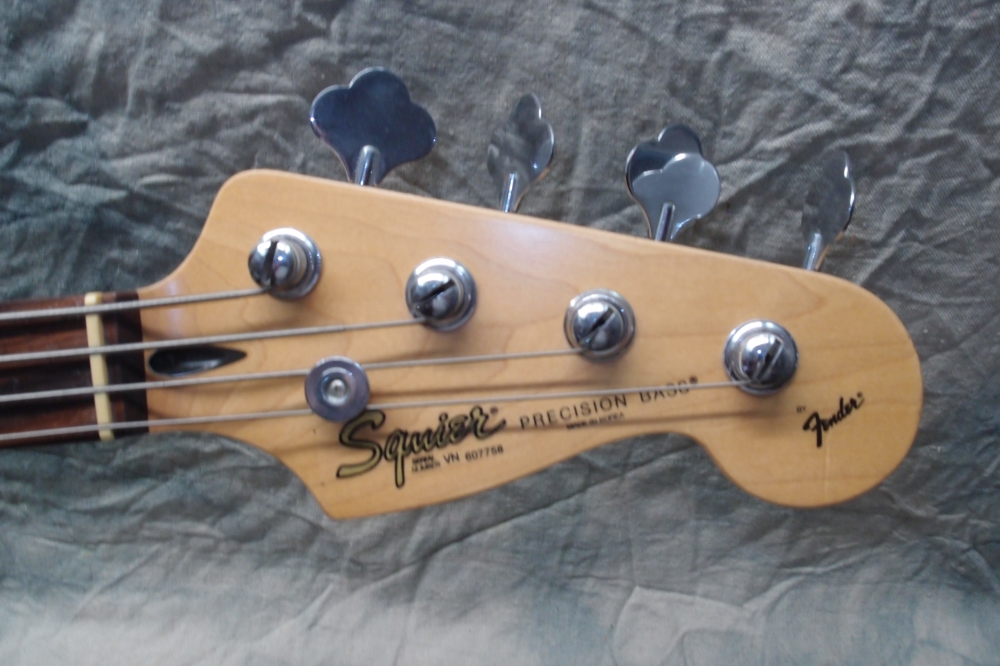January 22, 2020
KMise "US Dream" Distortion Pedal
January 22, 2020

First, I am bound to state that I received this pedal at no cost for review. Having gotten that out of the way …
This is the third one of these little pedals that KMise has sent me for review, after the Tremolo and Phase, and I am more than pleased with all three. These KMise pedals are well-built, very quiet, and great sounding. I'm sure there are pedal-snobs out there who will say that nothing under $200 could possibly sound good, but these do. With this line of pedals, you can build up a nice arsenal of effects without going broke!
To me, they are like the Danelectro mini-pedals of a few years ago, but better. Unlike the Danelectro, these pedals have sturdy metal cases and true-bypass switching. Also unlike the Danelectro minis, these have no battery capability, they require a power supply. Not having a battery is a good thing, the way batteries are made nowadays. It's not the leaking battery that hurts, it's the thing it was in that is now ruined !!!
In the range of distortions from fuzz to full-out heavy metal screamers, this one is somewhere in the middle. The tone is something like an Ibanez Tube Screamer, but the gain set in the middle on this pedal set is equal to all a Tube Screamer can do, so this pedal has a considerably wider range. Watch the manufacturer's demo video on the Amazon page below to get an idea what it sounds like. For the price, you really can't beat it.
Buy on Amazon:
https://amazon.com/Distortion-Electric-Guitar-Single-Bypass/dp/B07Y87B9Z4

